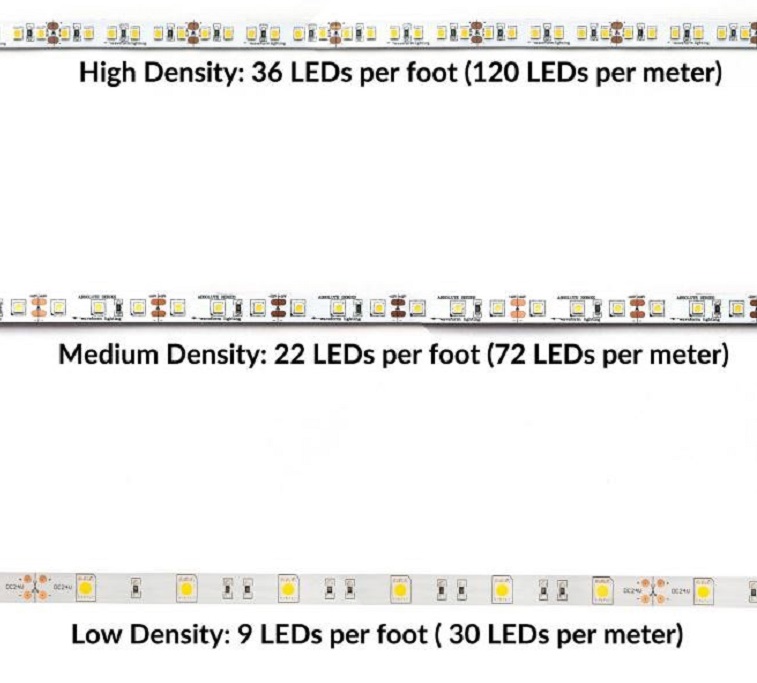Applications of LED strip lights is becoming wider around the world. From under-cabinet lighting to creating powerful ceiling light fixtures, they are available in a variety options of brightness, lengths, intensities, colors, and voltages.
1. Lumen (Brightness)
Lumen is the measurement of brightness as perceived to the human eye. Because of incandescent lighting, we are all accustomed to using watts to measure the brightness of light. Today, we use lumen. Lumen is the most important variable when choosing which LED strip light you need to look at. When comparing lumen output from strip to strip, note that there are different ways of saying the same thing.
Different projects require a certain amount of brightness to achieve a desired look. Our advice is to always go brighter than needed and add a dimmer.
Accent lighting – 150 to 250 Lumens/ ft
Under-Cabinet Lighting & Nearby Task Lighting – 175 to 550 Lumens/ ft
Distance Task Lighting – 350 to 1200 Lumens/ ft
Indirect Lighting – 375 to 1200 Lumens/ ft
Signage – 500 to 1200 Lumens/ ft
2. CCT – Color Temperature
CCT (Correlated Color Temperature) refers to the color temperature of light, measured in degrees Kelvin (K). The temperature rating directly affects what the white light will look like; it ranges from cool white to warm white. You can check below picture to find out the differences.
It is recommended the following temperature for different applications:
Outdoor LED lighting, bathrooms and areas – direct task lighting – 5000K to 6000K
Kitchens and hallways – 3500K to 4100K
Living rooms, bedrooms and foyers – 2700K to 3000K
3. CRI – Color Rendering Index
Can’t tell the difference between the black and navy colored socks in your walk in closet? That’s because your current lighting source has a very low CRI! Color Rendering Index (CRI) is the measurement of how colors look under a light source when compared with sunlight. The index is measured from 0-100, with a perfect 100 indicating that colors under the light source appear the same as they would under natural sunlight.
This rating is also a measurement in the lighting industry to help discern naturalness, hue discrimination, vividness, preference, color naming accuracy, and color harmony. Lighting with a CRI of 80+ is considered to be acceptable for most applications, while with a 90+ CRI(Hight CRI) are mainly used in commercial, art, film, photography, and retail locations.
4. LED Strip Size/Length
LED strip light is available in set length, normally are packaged on a reel of 5 meters(16′ 5”). If purchasing, make sure you are purchasing by the foot or by the reel. Moreover, this will make it easier to compare price.
5. Number of LED Chips
You may come across various LED emitter names such as 2835, 5050 or 5730. Don’t worry too much about this, as what is most important in an LED strip is how many LED chips are on the reel per meter/foot.

6. Wattage consumed per strip of LEDs
Last, choose the correct power supply for your LED strip lights. Wattage tells us how much power we are consuming while these lights are on, and in turn how much we’ll have to pay at the end of each month. An LED strip light that uses 24 volts will not work if you purchase a 12-volt power supply, and also may result in risk of fire. Be sure to verify the wattage per foot/meter and choose the correct power unit for your LED strip lights.




Be the first to comment on "How to Choose the Right LED Strip for Your Project?"